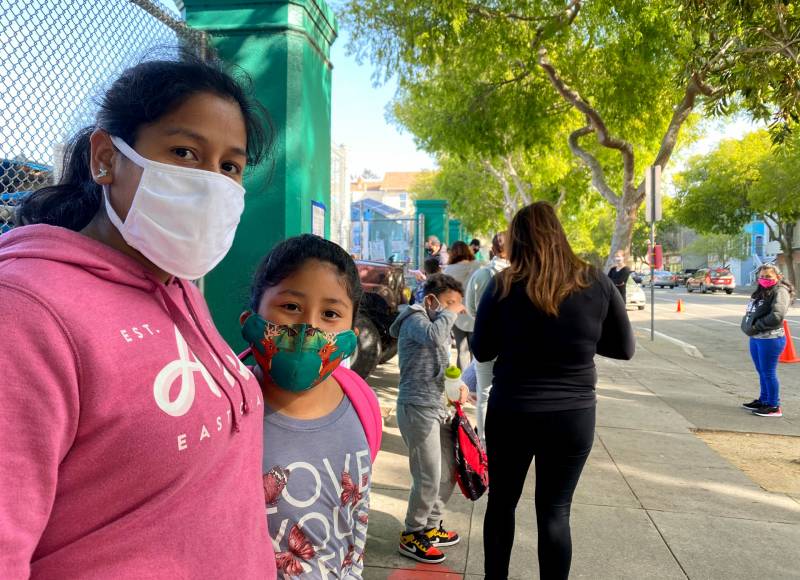“There won’t be any space for quarantine,” he said in Cantonese, which was translated by KQED. “That’s one room for four of us.” When his kids are home, he feels he can help them stay safe. But they take Muni to get to school, where he fears he has “no control over” who they’d have contact with.
With some students in school, and some still at home, teachers are finding themselves split in their duties. Andrew Patel is one of those teachers juggling multiple cohorts — in person and online — at Leonard R. Flynn Elementary School on Cesar Chavez Street, a stone’s throw from Precita Park.
Patel said it’s important not to forget why distance learning started in the first place.
“We went to distance learning because of COVID-19 and we’re still, as a community, experiencing a lot of loss and a lot of hardship. And we have to think about what we’re going to do as a school to bring joy and healing and feel good once we return while also staying safe in our classrooms,” he said.
That will be no easy task. Like other schools where demand has been high to return to physical classrooms, when Patel’s school reopens he will divide up his class, welcoming eight students who are his “cohort A” kids into his physical classroom while signing on to Zoom with eight other children, who will be in class from home. There is not enough space to accommodate them safely in his classroom, he said, hence the split. But cohort A and B students will each spend some time in class, and some time on Zoom.
Patel must also plan to continue the distance learning curriculum for two more students who are in “cohort C,” whose parents have opted to keep them in distance learning the entire time.
Not every teacher feels safe returning yet. SFUSD staffers can request accommodations to work remotely should they belong to a group of increased risk, with a substitute teacher assigned to buttress in-person learning. So far, 584 SFUSD staffers requested accommodations, and 290 have met the criteria for approval, according to SFUSD.
But the district will still need educators present to meet student demand. At a recent Board of Education meeting, SFUSD staff said only 91 new substitute teacher applications have been received, prompting a warning from staff that “current substitute teacher availability does not meet anticipated need.” The district is exploring “additional options” to deploy other staff as needed.

